Tradition is something you inherit or something you actively reconstruct every time you pick up a tool. At HAGD Contemporary in Aalborg, a Dutch painter rooted in tattoo culture and an Australian ceramicist obsessed with historical vessel forms prove you can do both.
Curated by Rasmus Peter Fischer, this pairing asks what happens when two artists working in fundamentally different mediums-painting and ceramics: discover they're speaking the same language about time, material, and memory.
Rasmus Peter Fischer on Pairing Geerts and Barkley at HAGD Contemporary
"I think they match and make each other stronger. Together, they create a pleasant presence and an aesthetic contrast that makes for a strong show, something visitors can dwell on, flow through, and enjoy. All in all, they provide the perfect building blocks for a well-curated exhibition."
That's how Rasmus Peter Fischer, curator and director of HAGD Contemporary, describes bringing Bob Geerts and Glenn Barkley together.

Fischer's curatorial approach balances solo and duo exhibitions, viewing each show not just as art for sale but as an experience designed for sustained engagement.
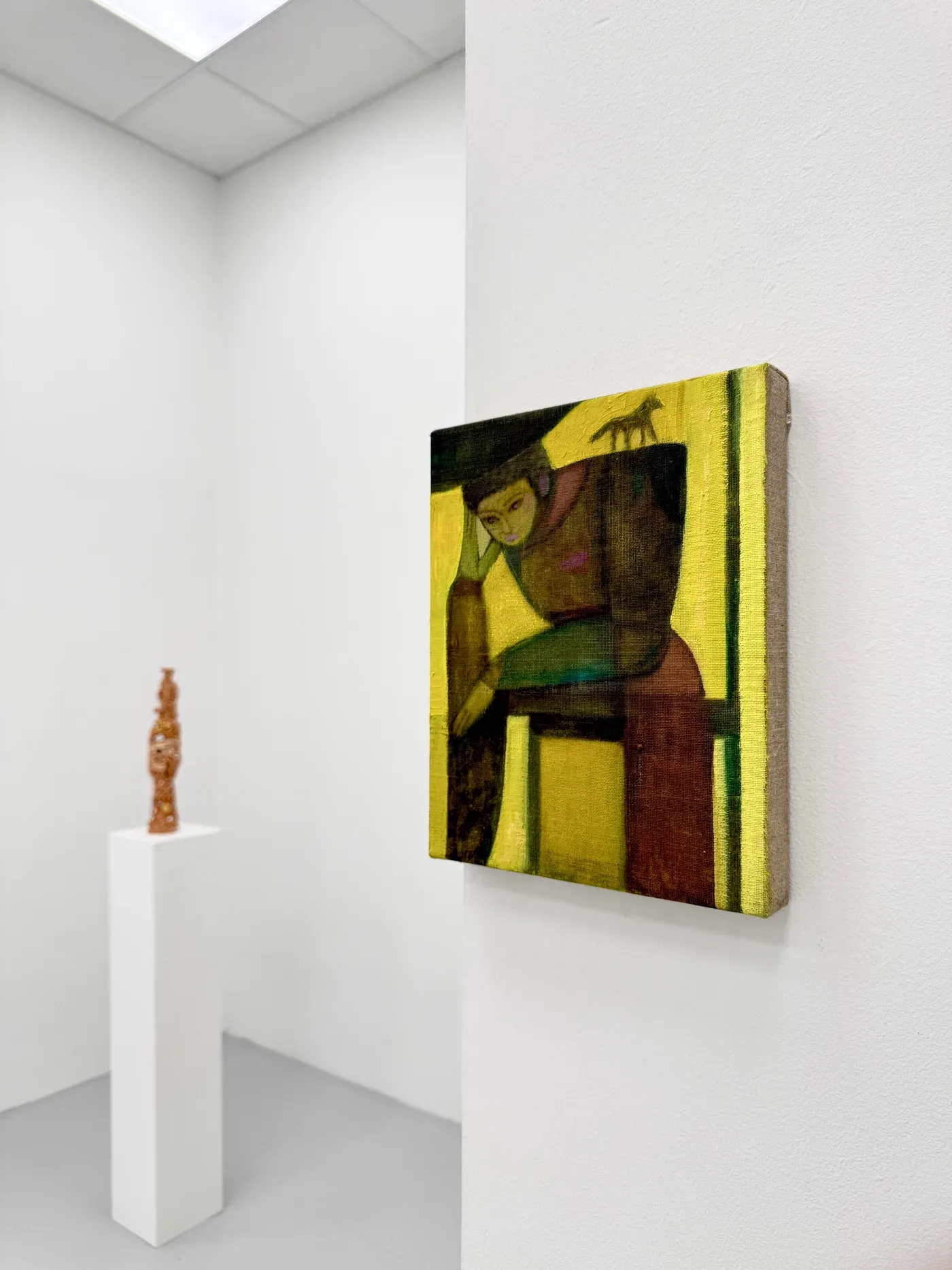
For Fischer, this exhibition represents perfect timing. Geerts is on fire, his talent deserving broader attention. Barkley fits seamlessly into HAGD's ceramic lineup.
Together, they provide the building blocks for a well-curated exhibition that strengthens the gallery's position with each show, helping it emerge stronger with every step forward.
What You See: Paintings That Wait, Ceramics That Remember
Bob Geerts works in bold, flat planes. His paintings are built from the visual DNA of traditional tattooing: thick black outlines, vivid yellows and ochres, figures that feel archetypal even when you can't place them.
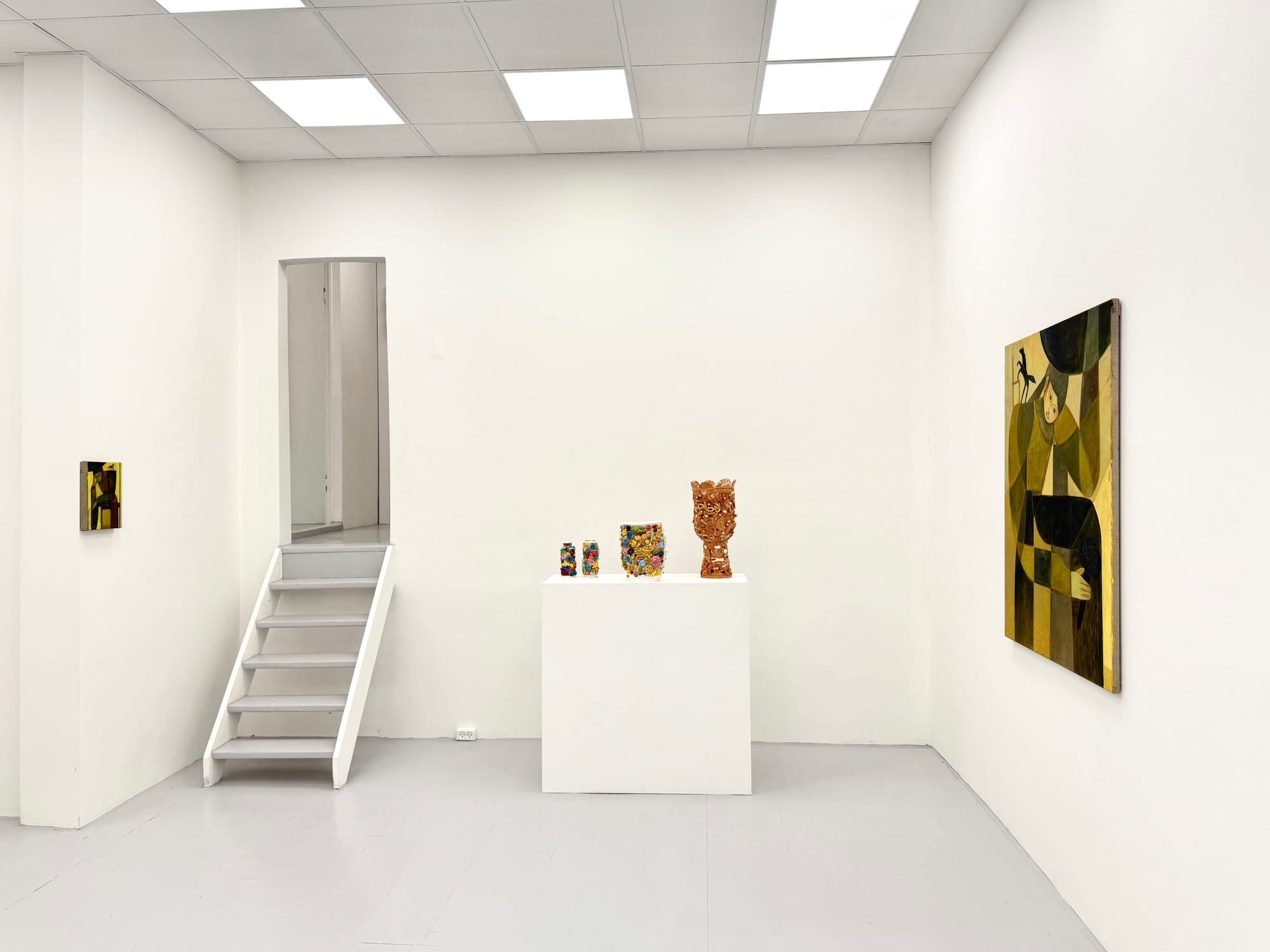
But he's not making tattoo flash. He's compressing folk art, Russian avant-garde, and cubist geometries into something that vibrates between recognizable and alien. The faces in his work are masks. The bodies are vessels. Everything is both human and symbol.
This new body of work developed across two seasonal cycles, beginning in October 2024 and revisited as winter approached again in 2025.
The series reflects the emotional and physical shift during darker months, a slowing down, a turning inward, a quiet waiting.
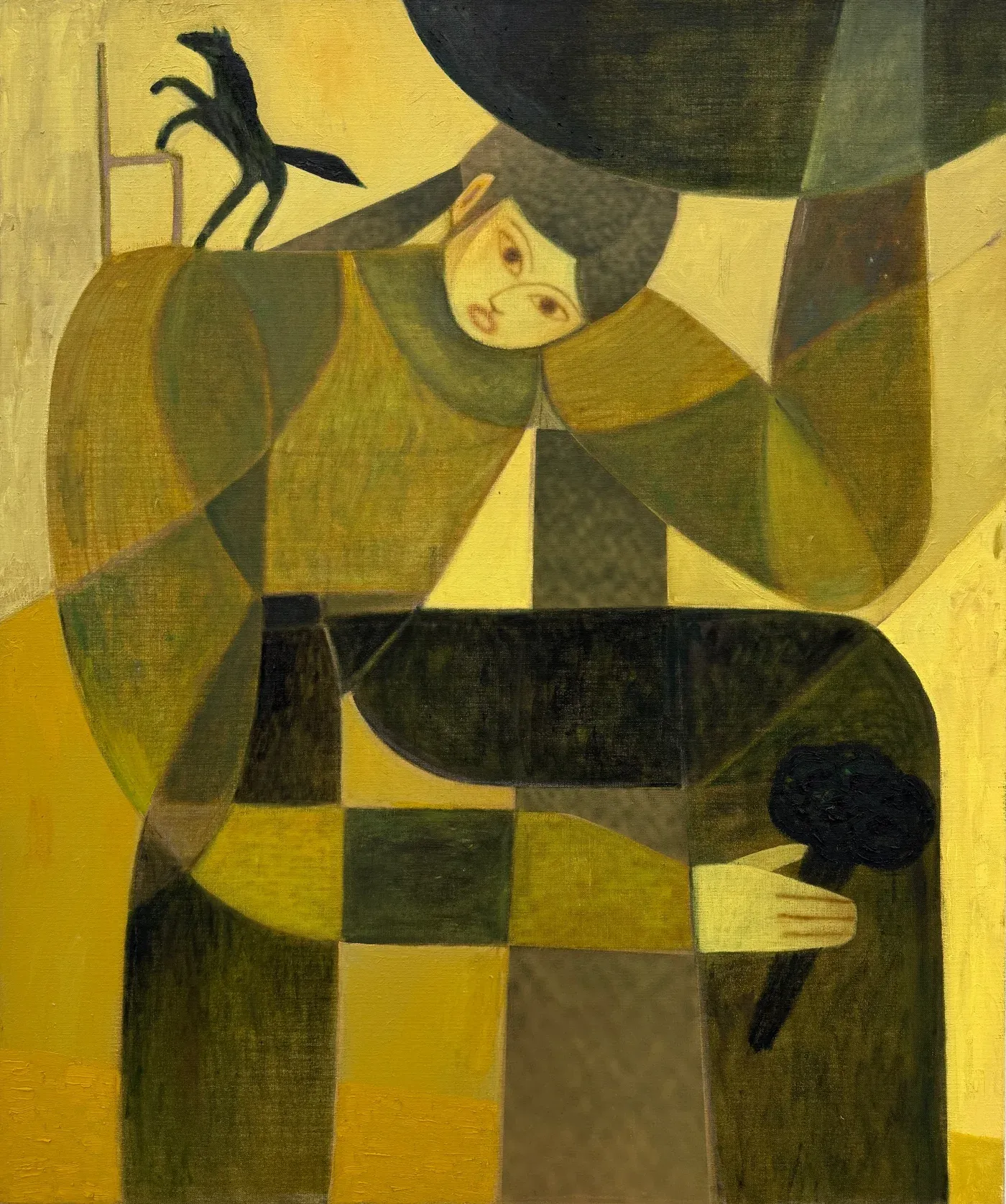
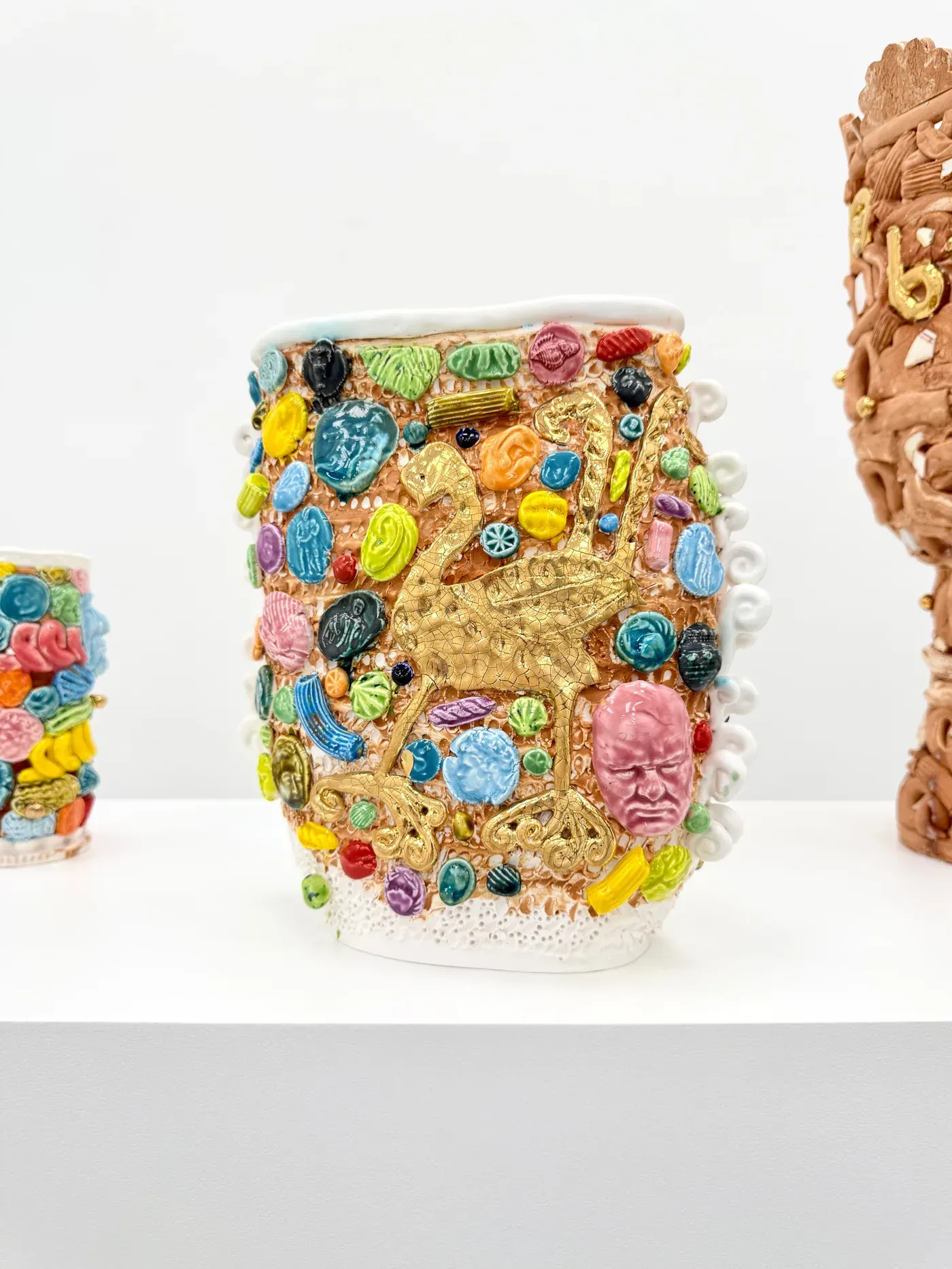
Contrary to the season's darkness, the paintings are anchored by vivid, expansive yellow backgrounds. This color functions as a constant presence of light rather than a memory of it, symbolizing endurance rather than longing.
The figures seated within these fields of light appear paused, resting, suspended between seasons. Outside, the flowers have already bloomed and the horses are ready to run. Renewal has arrived. Yet the human body often requires more time to meet that shift.
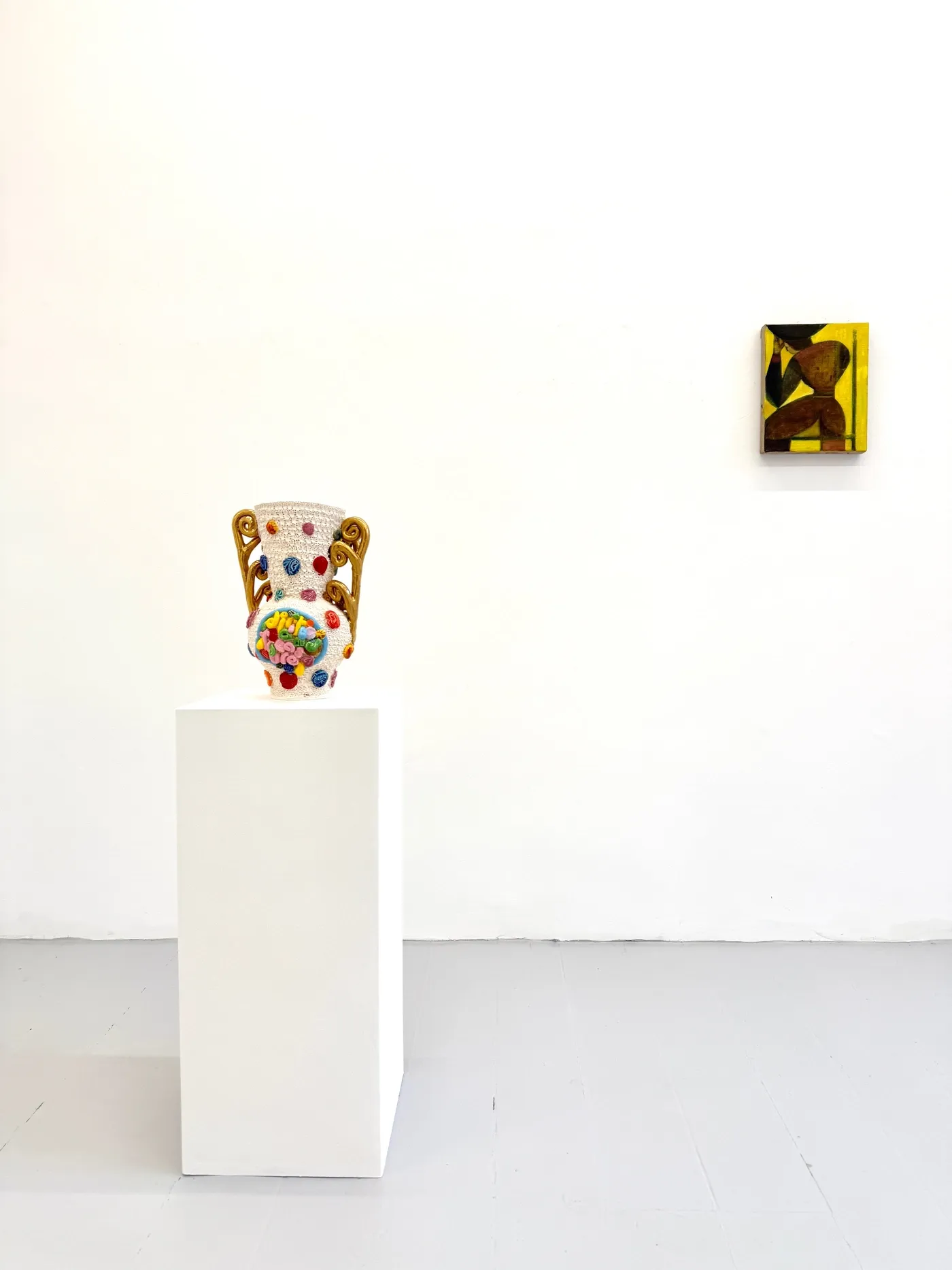
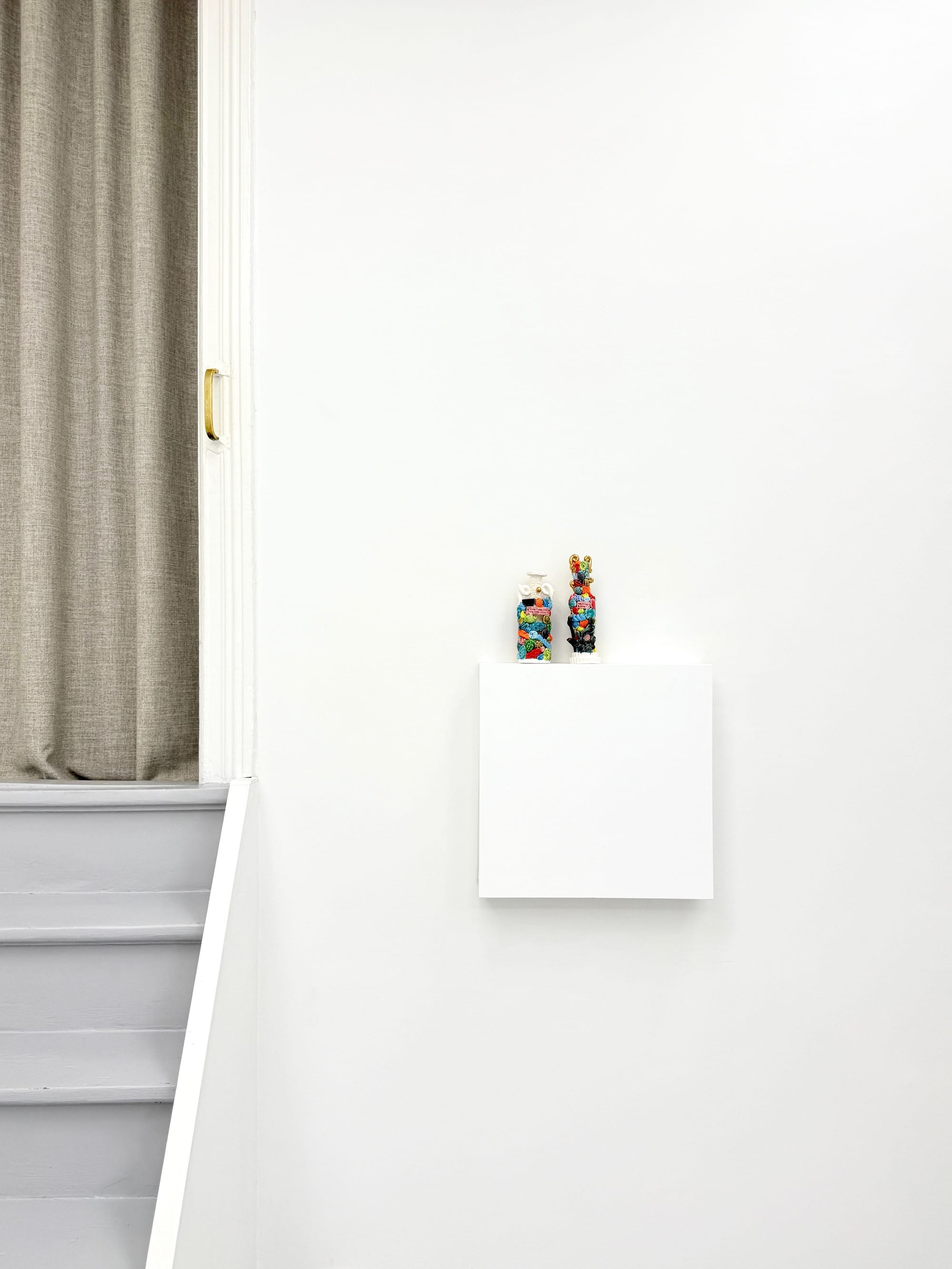
The exhibition features eight paintings, each holding a fragment of a poem that unfolds across the series:
Until the horses run and the flowers bloom, we'll sit inside, killing time in warmth, waiting for what's to come. We silently know, even though it takes a while, the light will return, ALWAYS.
Presented in a setting where seasons are directly felt, Geerts' work emphasizes that winter is not an ending but a passage.
The paintings invite viewers to acknowledge the slowness of internal cycles, to trust that light returns, always, even if it takes time.
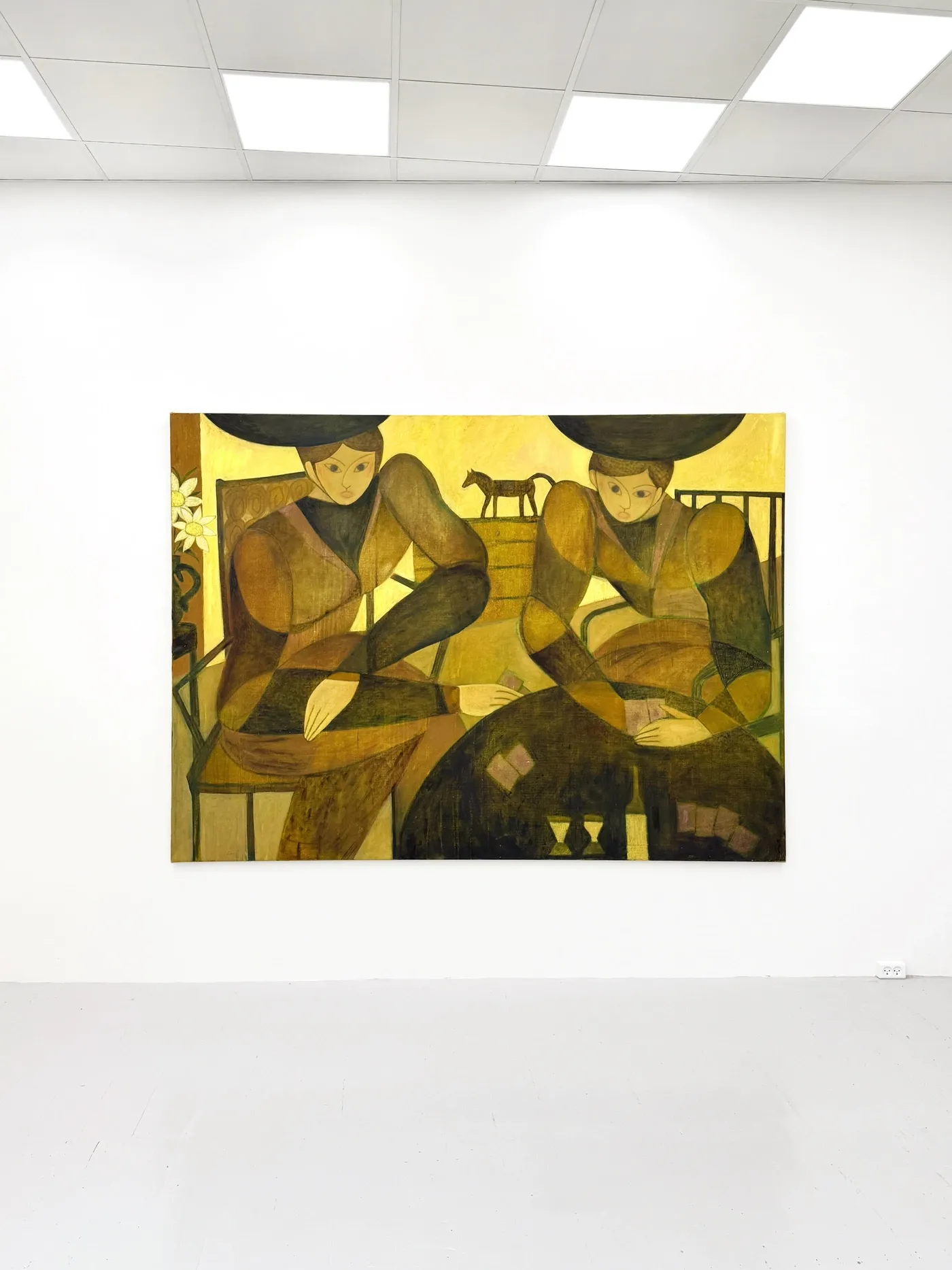
Glenn Barkley, meanwhile, makes ceramics that refuse to stay quiet. His vessels are covered in embossed clay stamps, shells, fragments of text pulled from songs, poetry, the internet.
The lyrebird, a bird native to the Shoalhaven region south of Sydney, famous for mimicking everything from other birds to chainsaws, appears constantly in his work. It's a perfect metaphor for what ceramic history actually is: endless replication, adaptation, theft.
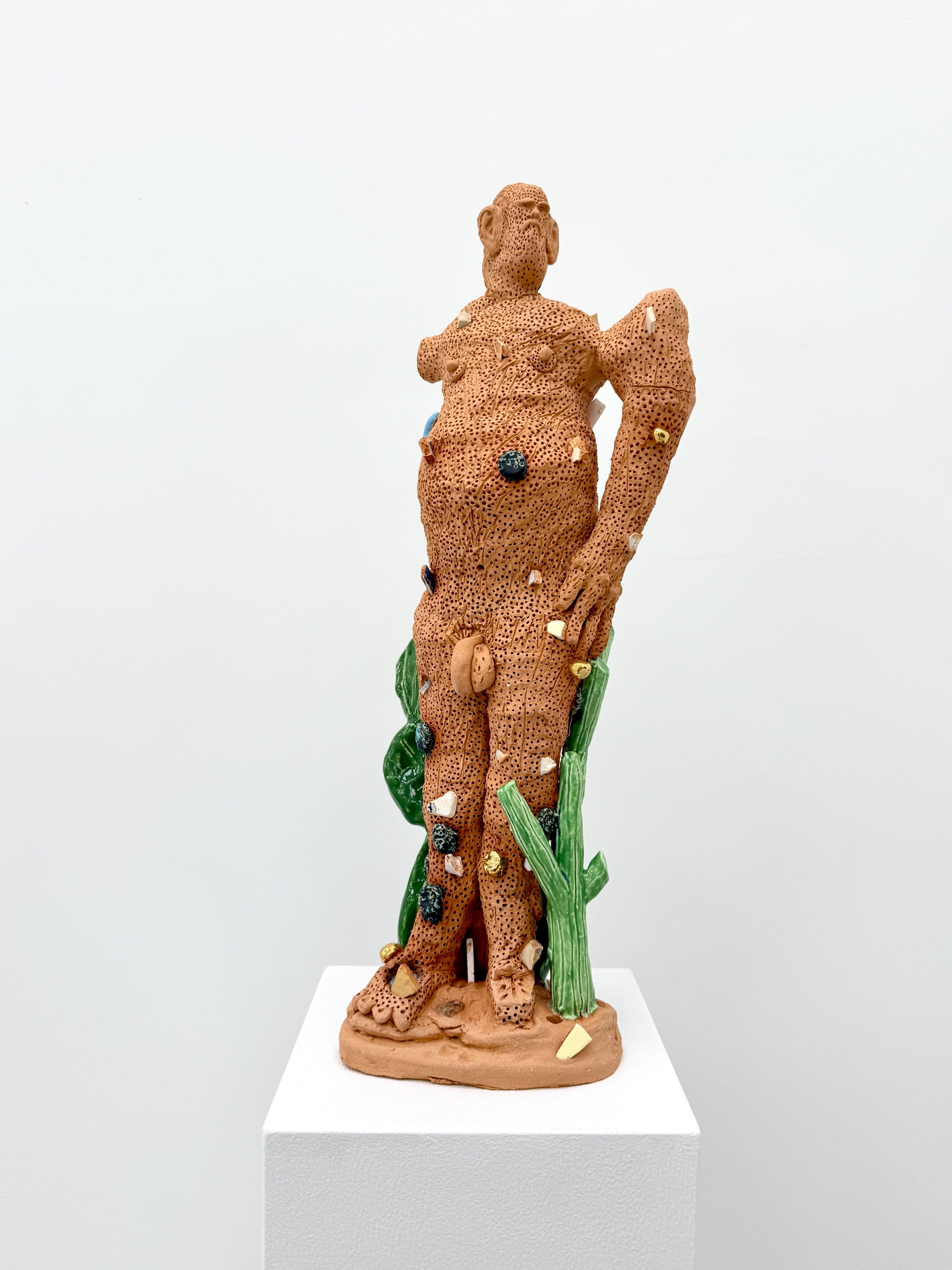
Barkley doesn't just reference this history. He embeds it. His new works include recycled pottery sherds, literal fragments of older vessels pressed into new forms.
This is evident in works like digbabydig and the figurative sculpture The Sculptor. The Lyrebird Vase includes the profile of the bird as both homage to ceramic history and acknowledgment of the medium's constant replications and reinventions. The past isn't quoted. It's material.
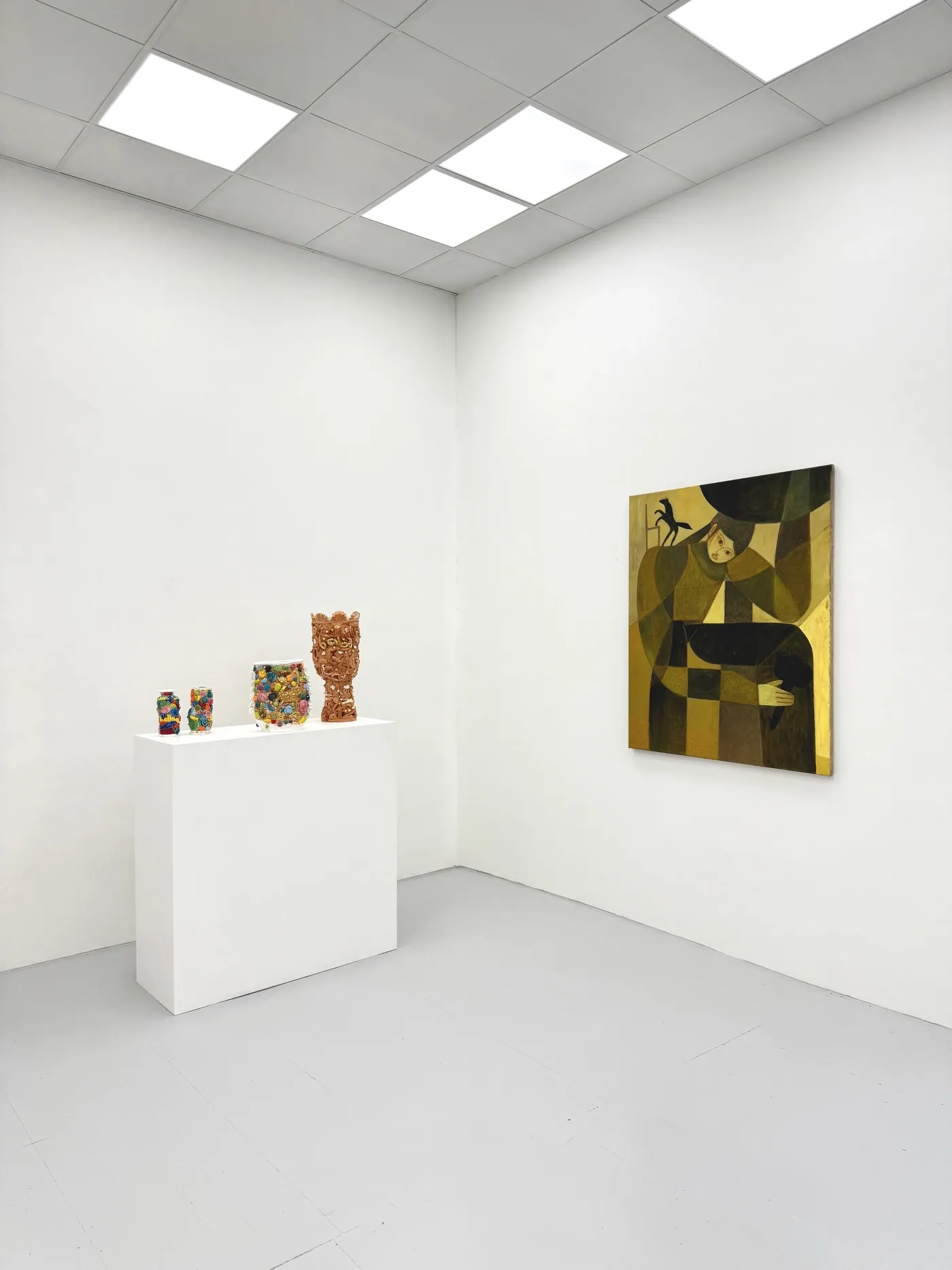
Geerts’ paintings find their footing beside Barkley’s ceramics. Barkley’s vessels come alive in dialogue with Geerts’ colors.
Neither artist is doing anything particularly subtle, and that’s the point. This isn’t a show about quiet contemplation. It’s about two strong voices speaking different languages and somehow landing on the same frequency.
Why This Matters Now
The pressure to be "original" is exhausting. The art world rewards consistency. Galleries want recognizable products. Collectors buy what they know. This creates a trap: keep making what worked or risk invisibility.
Geerts and Barkley refuse this trap. They admit their sources, tattoo conventions, ceramic archives, folk traditions, and then do something with them. The innovation isn't in pretending the past doesn't exist. It's in deciding what to keep and what to torch.

We've been sold the myth that tradition is static, something you either preserve or destroy.
But look at Barkley's recycled sherds, Geerts' cubist tattoo figures. Tradition is already fragments. It's already hybrid. The question is whether you work with the fracture, or insist on the myth that it was ever whole.
Post-pandemic, we're all performing versions of ourselves that worked once but don't anymore. Jobs that made sense five years ago. Relationships running on autopilot.
Geerts' winter paintings speak to this directly: the world outside is ready (horses ready to run, flowers blooming), but the body needs more time. That tension, between external pressure and internal rhythm, is what makes this show urgent.
For artists, this exhibition proves you can work with ancient forms, tattooing, ceramics, and still make something that feels contemporary. The key is honesty: admit your sources, then decide what survives.

For the rest of us, we're all working with inherited forms. Jobs, relationships, identities handed down or stumbled into.
The question isn't whether to keep or destroy them. It's whether you're brave enough to rebuild using the fragments that still feel true. Renewal doesn't require erasure. It requires editing.
In a moment when "authenticity" is a brand strategy and "heritage" is marketing copy, this exhibition reminds us what it actually means to have a relationship with the past. Not as aesthetic. Not as nostalgia. As living material. As method. As the thing you wrestle with every time you make a mark.
About the Artists
Bob Geerts (The Netherlands, 1990) is a self-taught visual artist with over 18 years of experience, including 13 as a professional tattooist.
Rooted in the traditions of tattooing, bold lines, vivid colors, timeless forms, his work explores the tension between preservation and reinvention.
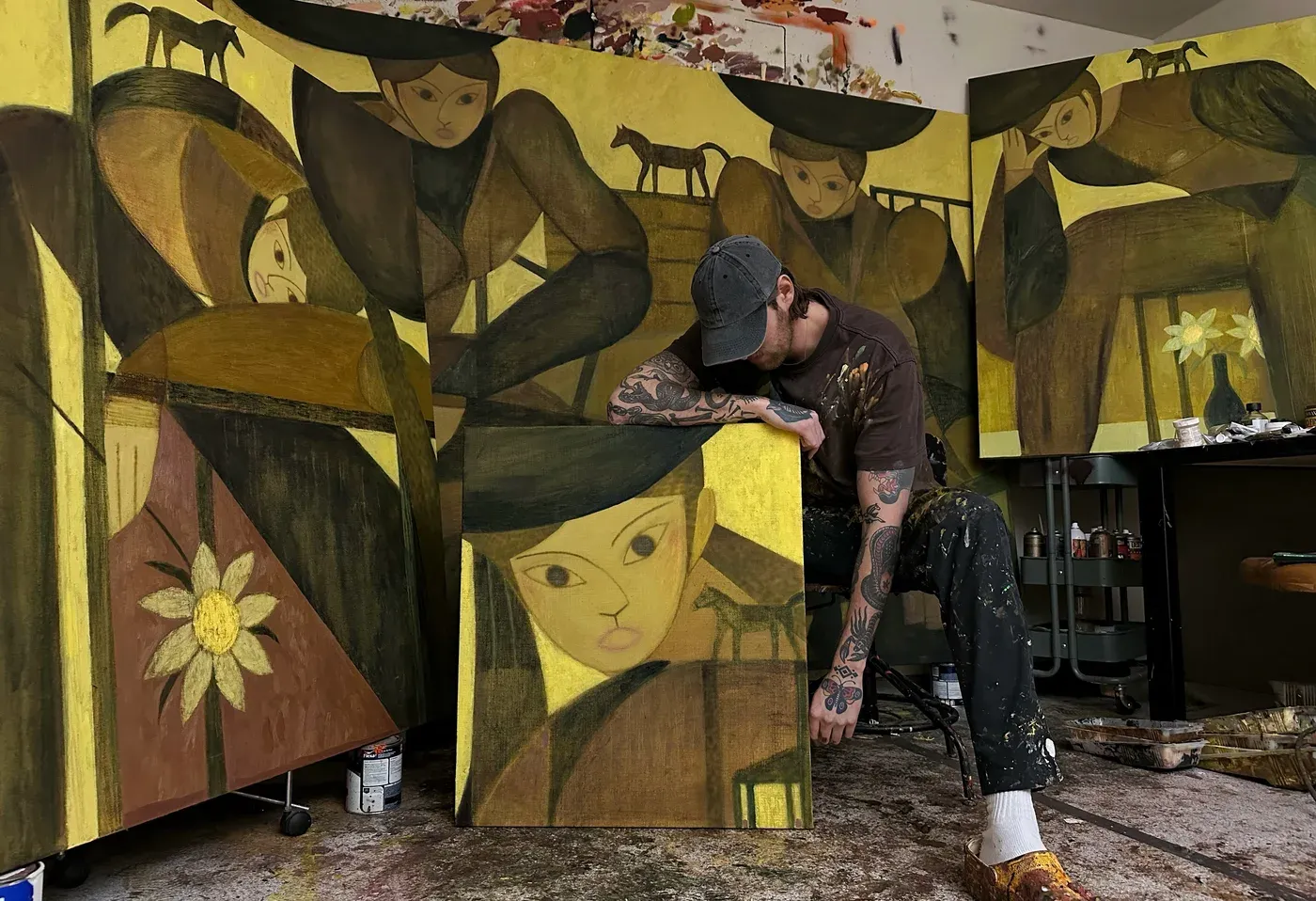
Drawing on influences from folk art, modernism, Russian avant-garde, and cubism, his paintings center on expressive human figures that embody strength and vulnerability, past and present.
Glenn Barkley is an Australian artist whose ceramic practice is rooted in the history of vessel forms.
He uses embossed clay stamps, shells, text from songs and the internet, and increasingly, recycled materials, both clay and found pottery sherds, to create works that are simultaneously ancient and immediate.
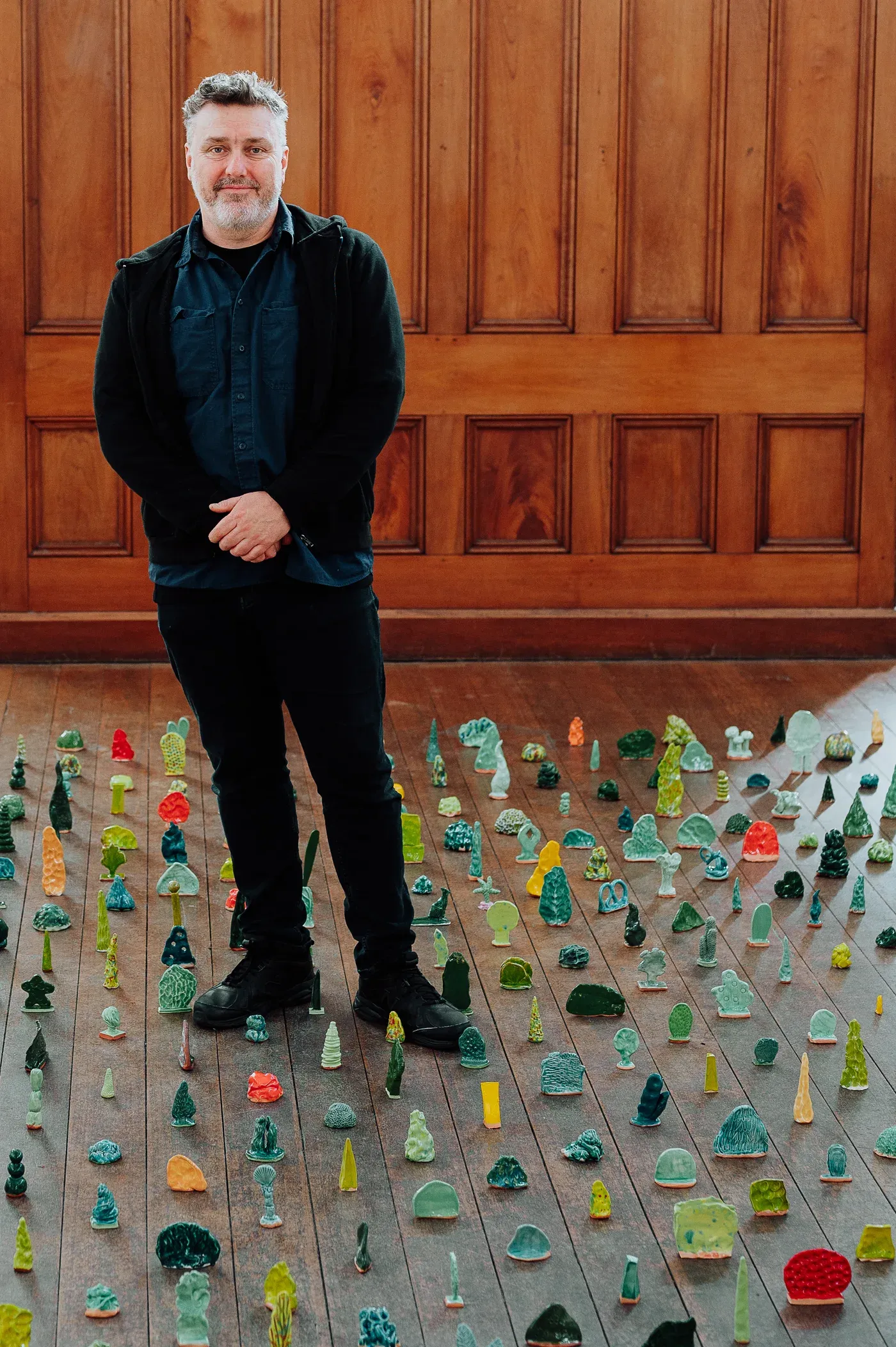
The lyrebird, his recurring motif, represents the constant replication and reinvention that defines ceramic history itself. Barkley lives and works in the Shoalhaven, south of Sydney.
Exhibition Details
Bob Geerts and Glenn Barkley: painting-stoneware duo
Curated by Rasmus Peter Fischer
Location: HAGD Contemporary, Aalborg, Denmark
Dates: November 8, 2025 - ongoing
Hours: Check HAGD Contemporary's website for current hours
If you're in Aalborg, see this exhibition at HAGD Contemporary.
If you're elsewhere, follow HAGD Contemporary and Rasmus Peter Fischer on Instagram for updates.
More to Read:
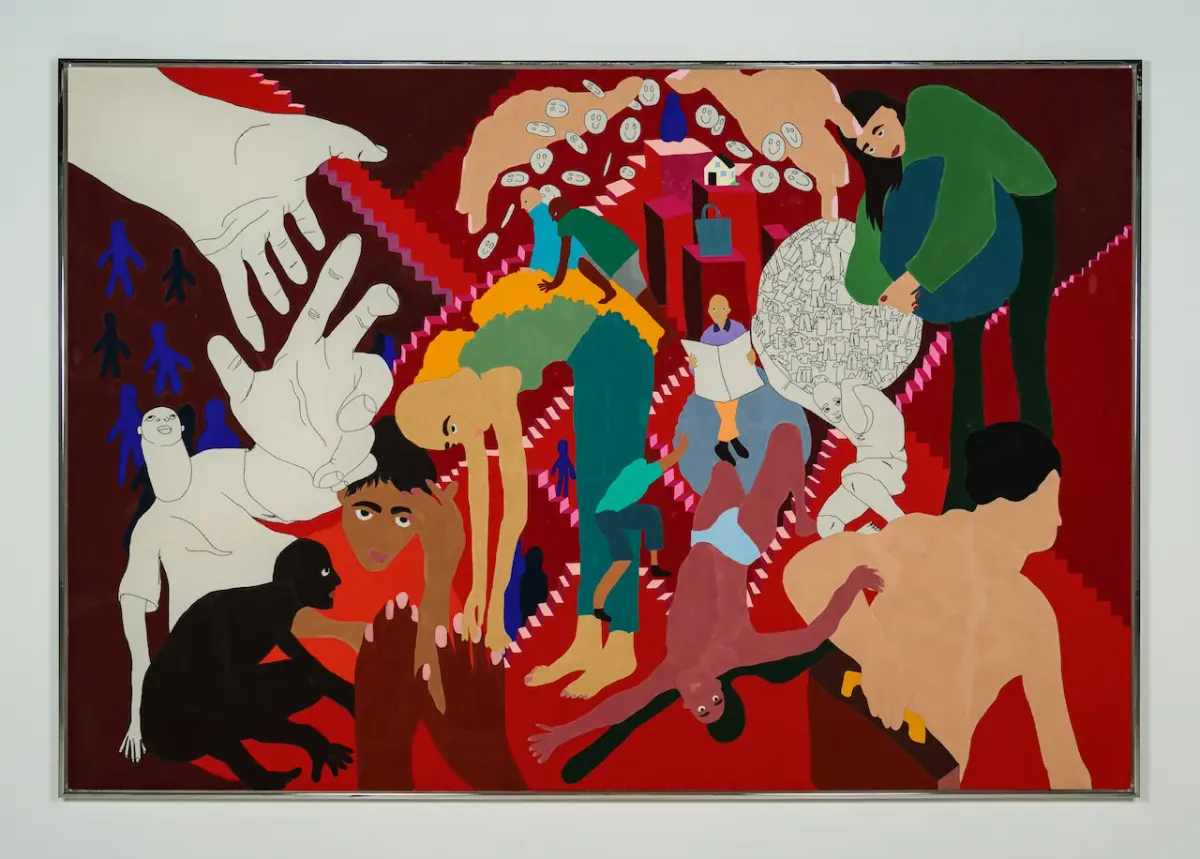
Ela Fidalgo - Spotlight

Manu Garcia - Artist feature
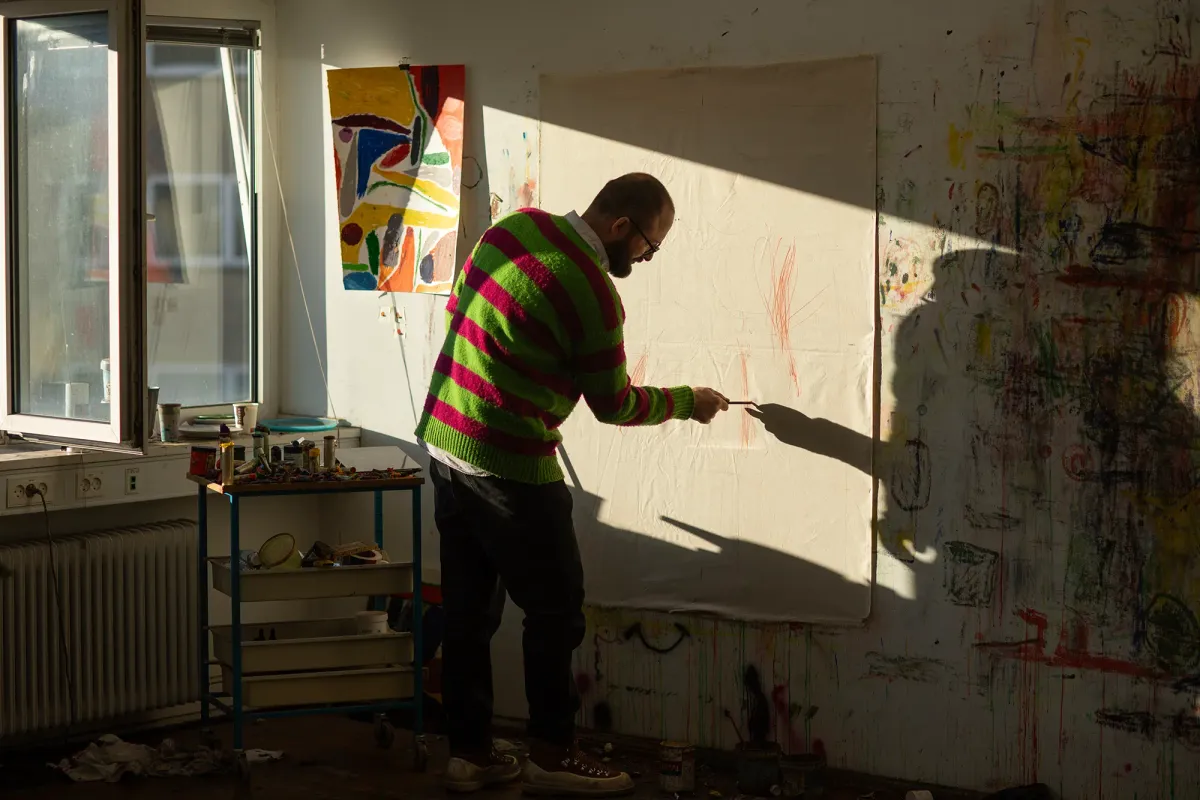
Sune Christiansen






Member discussion